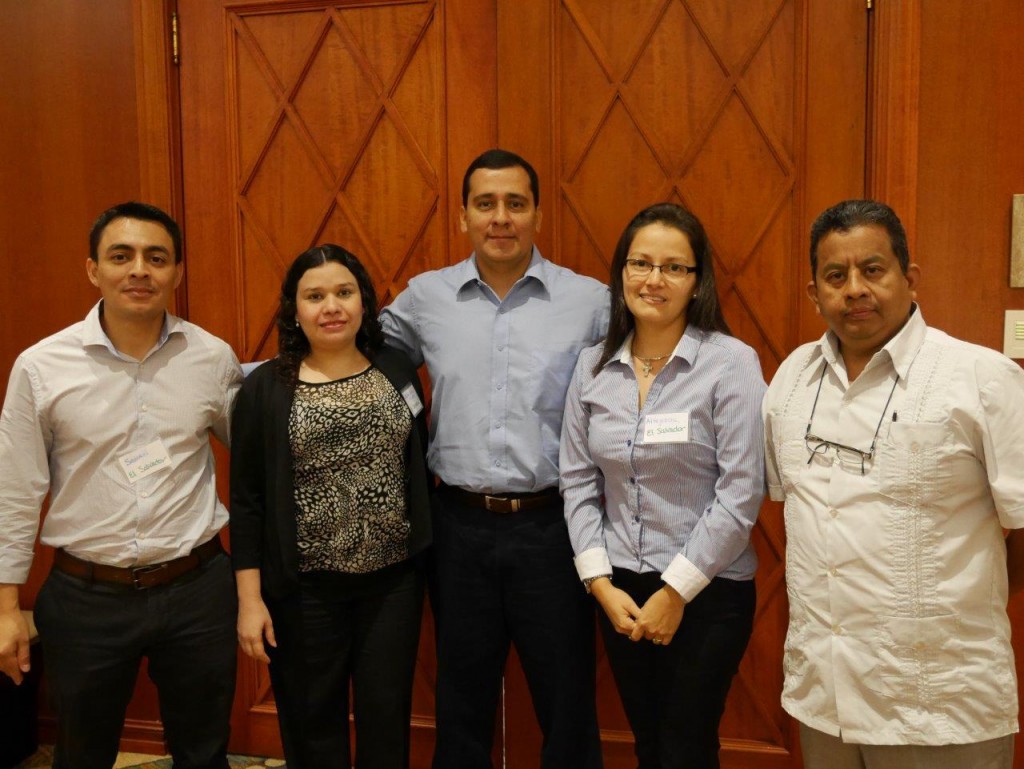Advancing Maternal, Child Health in Latin America and the Caribbean
Categories: Announcements, Maternal, Neonatal and Child Health (MNCH)
Recently, USAID sponsored a course for more than 40 delegates from the Ministries of Health and Finance from the Dominican Republic, Guatemala, Guyana, Haiti, Honduras, El Salvador and Peru to learn about strategies for progressing toward Universal Health Coverage and advancing maternal and child health. The workshop, which took place in Panama City, Panama, focused on the challenge of achieving universal health coverage in transitioning countries and considered topics of equity, efficiency, and priority setting.
In interviews conducted during the event, the delegates also shared initiatives developed in their own countries, especially around effective practices to reduce health inequities, which is the objective of A Renewed Promise for the Americas. This series begins with El Salvador, and other country interviews will follow. Visit the course landing page here.
El Salvador: Advances in Reducing Maternal Mortality
Dr. Altagracia Xochitl, Medical Assistant to the Deputy Minister of Health Services, Ministry of Health of El Salvador, explained that the Ministry of Health initiated health reform in 2009. Before the reform, major inequities were identified: primary care coverage was limited to a few municipalities, leaving aside the remote rural areas. Health care coverage reached only 40% of the population. Furthermore, clients were charged a “voluntary fee,” which required them to pay the equivalent of dollar per visit.
Before 2009, the health system was fragmented, segmented, and delivered poor quality health care. In addition, surgical equipment was obsolete, drugs were in short supply, and human resources were limited. Of the 30 hospitals in the country, only three had a maternity ward. The maternal mortality rate before the reform, in 2006, was 65.4 deaths per 100,000 live births, and under-five mortality rate was 10.2 per 1,000 live births.
In terms of strengthening maternal and child care, El Salvador’s health reform has had several lines of action:
- creating maternity wards in 25 hospitals with adequate supplies and human resources;
- recruitment of specialists, such as pediatricians and gynecologists; strengthening obstetric and neonatal care;
- creating 21 maternity waiting homes;
- implementing 331 community health units and 38 units of specialized health; and eliminating fees.
All these initiatives have been prioritized in the remote municipalities.
As a result of the reforms, institutional deliveries increased from 39.3 percent in 2006 to 99.8 percent in 2013, helping to reduce maternal mortality from 65.4 in 2006 to 38 per 100,000 live births in 2013, which meant reaching the fulfillment of millennium development goal number five.
“Although progress is considerable, there are still challenges and we look forward to strengthening the Health Reform in our country,” says Dr. Altagracia Xochitl.

Members of the delegation of the Ministry of Health of El Salvador at the USAID and HFG flagship course in Panama. From left to right: Dr. Samuel Ulices Velásquez, María de los Angeles Moreno, Dr. Luis Antonio Castillo Durán, Dr. Altagracia Xochitl, and Dr. Ulises Nolasco. ©Diana Valcárcel
El Salvador and A Promise Renewed for the Americas
El Salvador was one of the countries that signed the Declaration of Panama in September 2013, committing to reduce inequities in maternal, infant and child health. Following the signing of the Declaration by 27 Latin American and Caribbean countries, the movement, A Promise Renewed for the Americas, was created as a support mechanism to help countries settled to reduce inequities in health. The movement works in collaboration with the global A Promise Renewed initiative. This Central American country through health reform and the results obtained, are taking important steps forward to reduce the inequality gap and provide more equitable access to remote, vulnerable populations.
— By Diana Valcárcel, UNICEF-A Promise Renewed for the Americas



